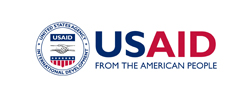
Periperi U Annual Report 2014-2015
This Annual report illustrates the activities and developments of the consortium’s partners between the reporting period 1st October 2014 to 30th September 2015 as required in terms of USAID Agreement AID-OFDA-G-11-00215.
Click here to download the report.
The current phase of the Periperi U programme sought “[To] reduce disaster risks in selected African countries through improved national and local disaster risk management due to enhanced strategic human capacity to integrate risk reduction into critical developmental sectors and programmes”. Its overarching objective sought to “build sustainable ‘multi-tasking’ capabilities in disaster risk and vulnerability reduction capacity building in ten selected institutions of higher learning in Africa from 2008 to 2011, consistent with global disaster reduction priorities reflected in the Hyogo Framework of Action.”
The report is divided into 6 parts. Section 2 details the accomplishments within each of the five key focus areas specified in the USAID grant, specifically;
- Institutional development, embedding and expansion (i.e. sustainability) of active disaster risk-related teaching and training, research and policy advocacy capacity with particular emphasis on urban and hydro-meteorological risks.
- Provision of short disaster risk-related courses for capacity building and knowledge sharing among partners and external stakeholders.
- Growth and sustainability of new undergraduate and/or graduate programmes related to reducing/managing the risk and vulnerability profile of the country concerned.
- Generation and communication of applied research outputs by each unit/programme related to the risks and vulnerabilities of the country concerned that increase local understanding and improve the management of those risks.
- Mobilisation of the consortium to advance disaster-risk reduction efforts through strategic engagements at national/sub-national, continental and international scales by each of the partners with governmental, nongovernmental, international and scientific stake-holders.
Archives
Latest Vids
sdfg sdfg sdf


